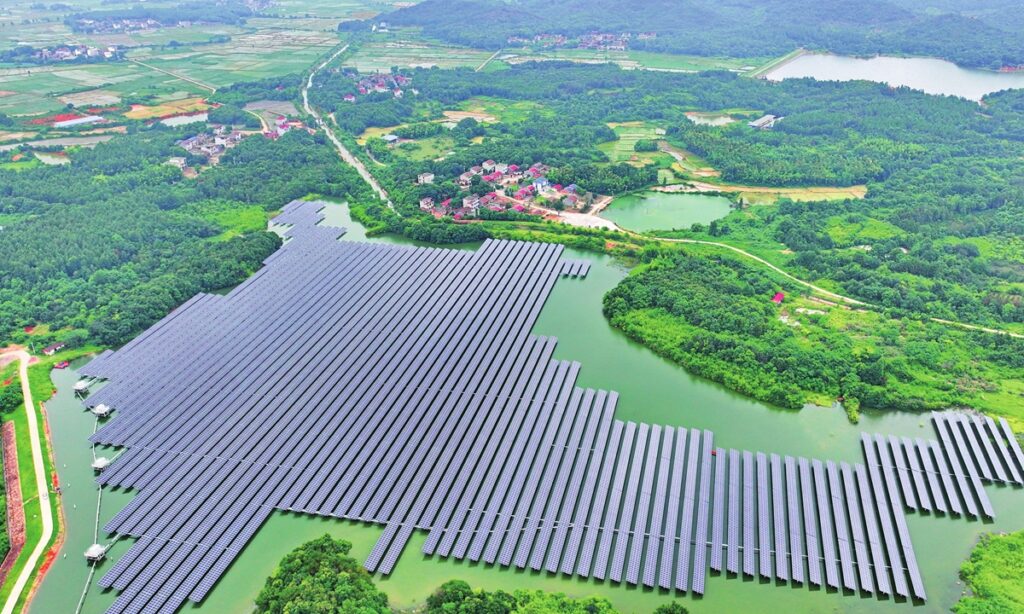The 6th China International Import Expo (CIIE) has purchased 8 million kilowatt-hours of green electricity through inter-provincial green electricity trading, marking the first time that the event will achieve an all-green exhibition, according to the Xinhua News Agency on Saturday.
The green electricity generated by wind and solar photovoltaic farms from East China’s Anhui Province covered all power usage of the CIIE, including each light, each shuttle bus and each device in the exhibition area, and it was estimated to reduce 3,360 tons of carbon emissions, the report said.
In addition, the organizer of the event bought carbon emission allowances to neutralize greenhouse gas emissions from the buildings and catering services of the exhibition. The total capacity of photovoltaic panels installed on the roof of the National Exhibition and Convention Center, the main exhibition building of the CIIE, reached 2.2 megawatts, and it would reduce the general emissions of the building by 4.6 percent.
As China continues to set ambitious targets for carbon neutrality, observers noted that initiatives like the CIIE’s all-green electricity consumption demonstrate the country’s commitment to leading the global transition toward a low-carbon society.
The exhibition areas in the sectors of low-carbon energy and artificial intelligence increased by 30 percent from the previous CIIE, and multiple related types of equipment appeared for the first time during the expo, said China’s Ministry of Commerce.
During the CIIE, China’s Sinopec clinched $40.3 billion in purchase contracts with 38 cooperation partners from 38 countries and regions, and it also signed a long-term liquid natural gas supply contract spanning 27 years with Qatar Energy, further implementing the power source transformation from fossil fuel to clean energy, Chinese media outlet thepaper.cn reported on Sunday.
Germany-based glass technology company SCHOTT AG, one of the CIIE participants, told the Global Times on Sunday that the company has completed glass melt production experiments with 100 percent use of hydrogen to replace natural gas, and this will be further tested in glass furnaces.
SCHOTT released a white paper about the sustainable development of the glass industry at the fifth CIIE, and it vowed to achieve carbon neutrality as of 2030.
(Global Times)




